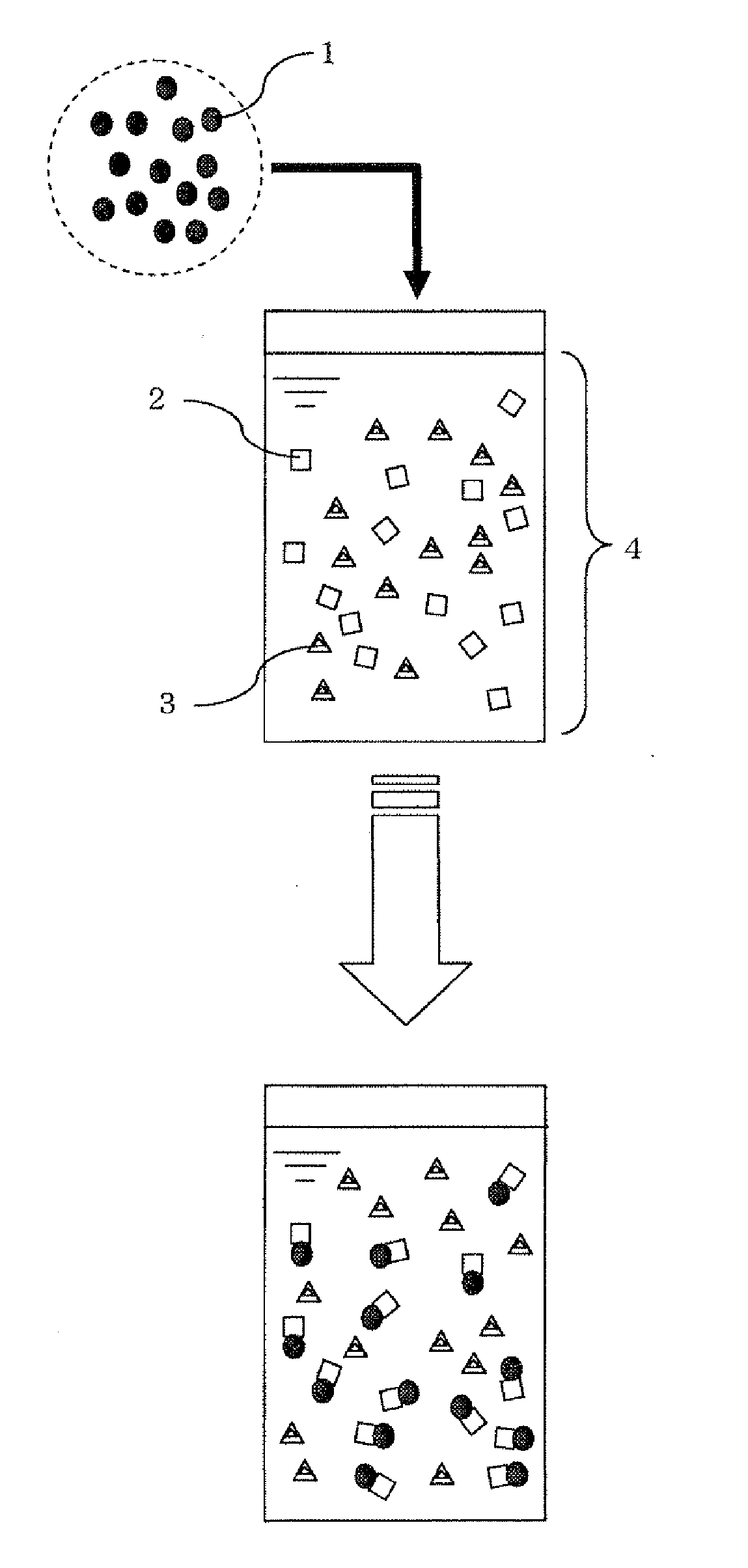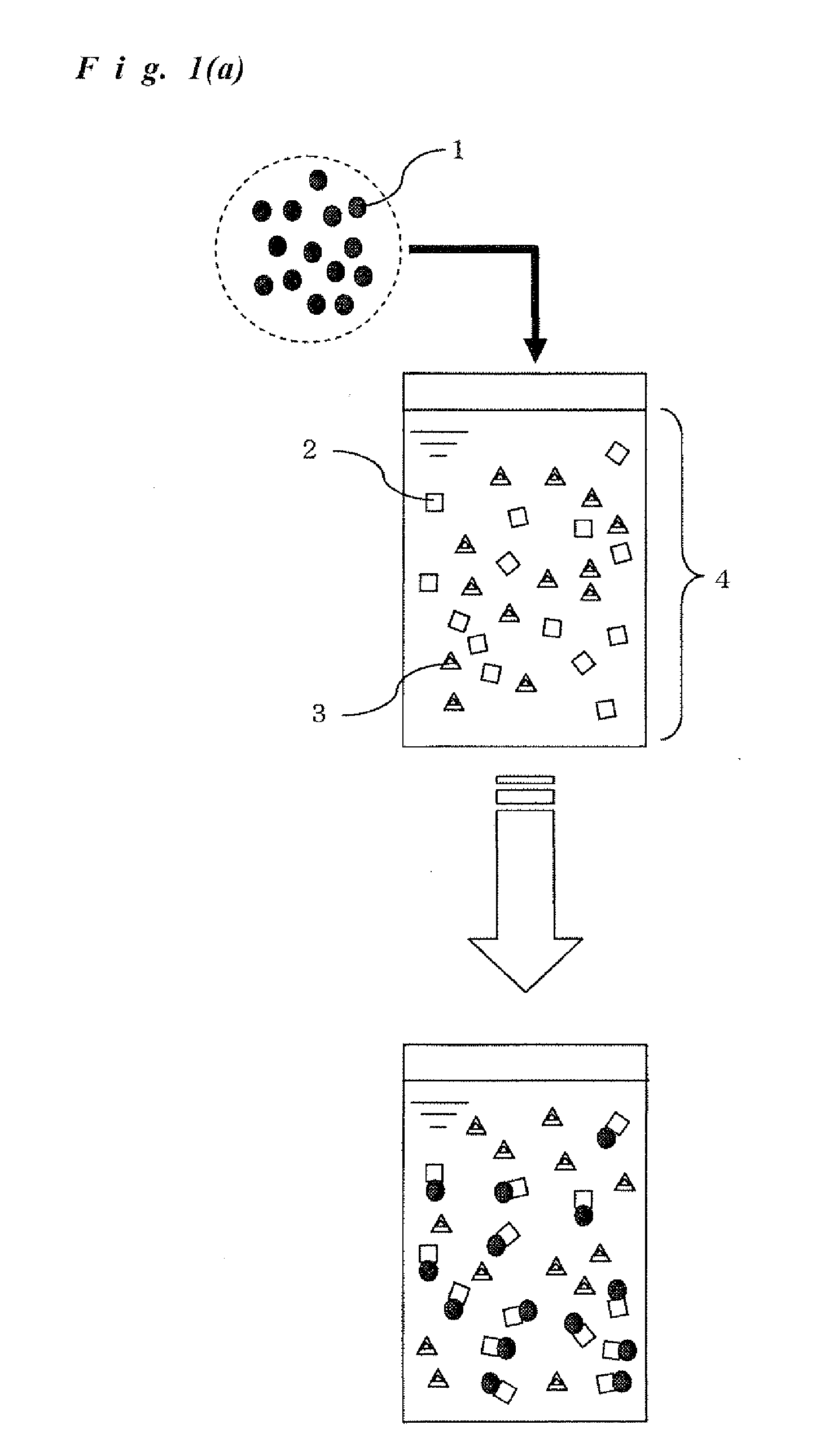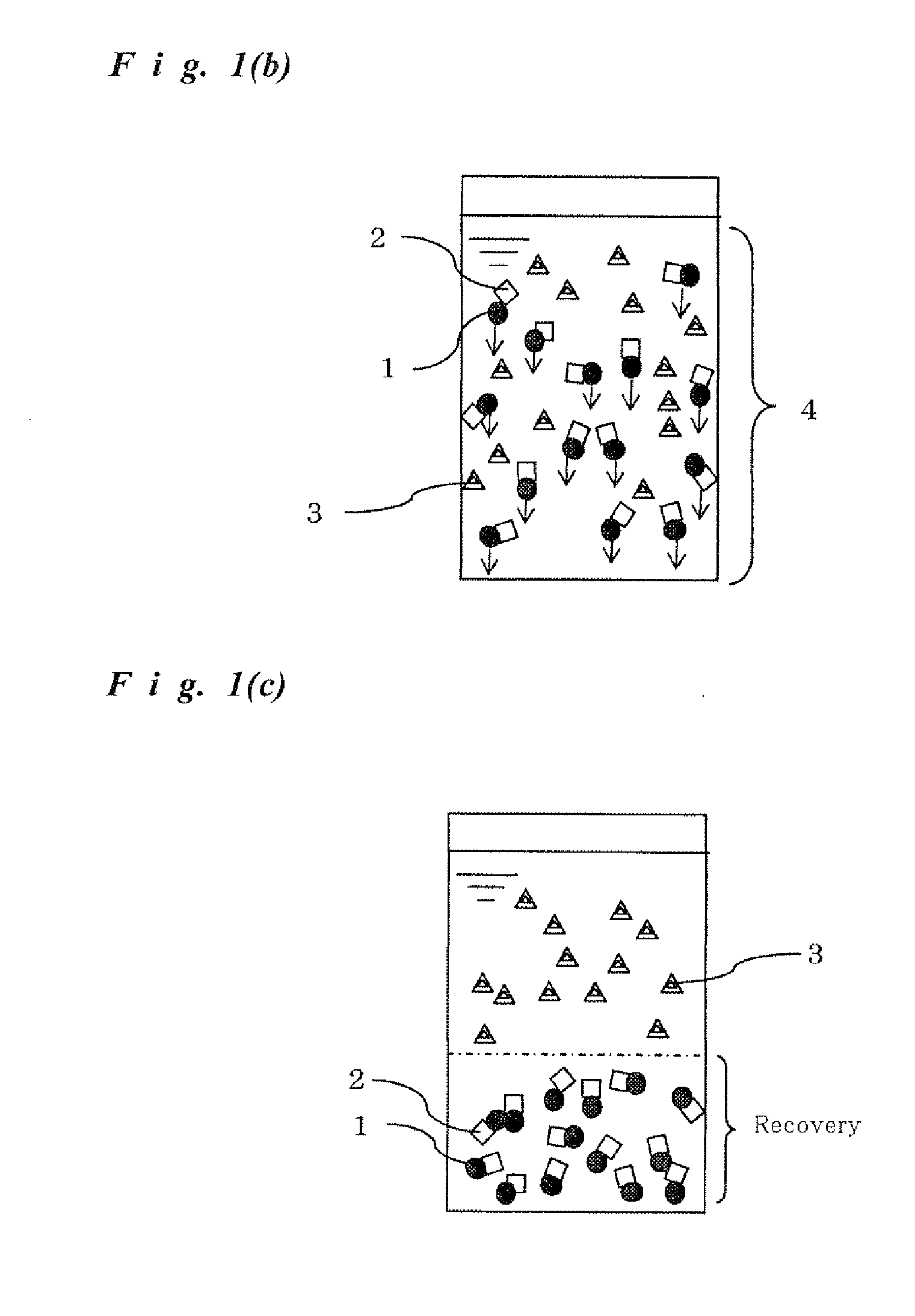Surface-roughened high-density functional particle, method for producing the same and method for treating target substance with the same
a high-density functional particle and surface roughening technology, applied in the field of functional particles, can solve the problems of reduced sensitivity for detection of target substances, reduced sensitivity of surface roughness of composite particles, and inability to achieve efficient aggregation of particles, etc., to achieve high separation rate, reduce the time required for separating target substances, and reduce the effect of separation ra
- Summary
- Abstract
- Description
- Claims
- Application Information
AI Technical Summary
Benefits of technology
Problems solved by technology
Method used
Image
Examples
example 1
[0187]Yttrium-doped zirconia particles p1 (available from Niimi Inc.) were used. The particles p1 had a particle size of 23 μm, a specific surface area of 0.056 m2 / g and a density of 6 g / cm3. The particles p1 and 25 vol % aqueous sulfuric acid solution were mixed with each other within a pressure tight vessel, and the resultant mixture was heated in a thermostatic bath at a temperature of 200° C. for 6 hours. Thereafter, the mixture was washed and dried. After the above procedures, it was confirmed that the specific surface area of the resultant particles was 0.40 m2 / g. An electron micrograph of such particles is shown in FIG. 2 wherein FIG. 2(a) is an overall view of the particle, and FIG. 2(b) is an enlarged view of the surface of the particle. Subsequently, 10 g of the particles were dispersed into 25 g of pure water and then 3 g of 3-glycidoxypropyltrimethoxysilane was added into the resultant dispersion while stirring, followed by further stirring for 4 hours. After washing par...
example 2
[0189]The same procedure as that of Example 1 was performed except for the conditions of the sulfuric acid treatment in Example 2 being a temperature of 200° C. and treatment time of 8 hours. The obtained particles P2 in Example 2 had a particle size of 23 μm, a specific surface area of 1.6 m2 / g and a density of 6 g / cm3. The specific surface area 1.6 m2 / g of the particles P2 was 37 times larger than the specific surface area of the true spherical particle having a smooth surface and having the particle size 23 μm (i.e. the specific surface area 0.043 m2 / g obtained from the particle size 23 μm and the density 6 g / m3).
[0190]The accumulated micropore volume of the particles P2 regarding micropores having radius of not less than 20 nm was 8.3×10−3 cm3 / g. Thus, the ratio of the accumulated micropore volume regarding micropores having radius of not less than 20 nm per unit surface area [cm2] of the true spherical particle having the same particle size and the same density as the obtained ...
example 3
[0191]The same procedure as that of Example 1 was performed except for the conditions of the sulfuric acid treatment in Example 3 being a temperature of 200° C. and treatment time of 12 hours. The obtained particles P3 in Example 3 had a particle size of 23 μm, a specific surface area of 2.7 m2 / g and a density of 6 g / cm3. The specific surface area 2.7 m2 / g of the particles P3 was 62 times larger than the specific surface area of the true spherical particle having a smooth surface and having the particle size 23 μm (i.e. the specific surface area 0.043 m2 / g obtained from the particle size 23 μm and the density 6 g / m3).
[0192]The accumulated micropore volume of the particles P3 regarding micropores having radius of not less than 20 nm was 2.6×10−2 cm3 / g. Thus, the ratio of the accumulated micropore volume regarding micropores having radius of not less than 20 nm per unit surface area [cm2] of the true spherical particle having the same particle size and the same density as the obtained...
PUM
| Property | Measurement | Unit |
|---|---|---|
| Density | aaaaa | aaaaa |
| Particle size | aaaaa | aaaaa |
| Particle size | aaaaa | aaaaa |
Abstract
Description
Claims
Application Information
 Login to View More
Login to View More - R&D
- Intellectual Property
- Life Sciences
- Materials
- Tech Scout
- Unparalleled Data Quality
- Higher Quality Content
- 60% Fewer Hallucinations
Browse by: Latest US Patents, China's latest patents, Technical Efficacy Thesaurus, Application Domain, Technology Topic, Popular Technical Reports.
© 2025 PatSnap. All rights reserved.Legal|Privacy policy|Modern Slavery Act Transparency Statement|Sitemap|About US| Contact US: help@patsnap.com



